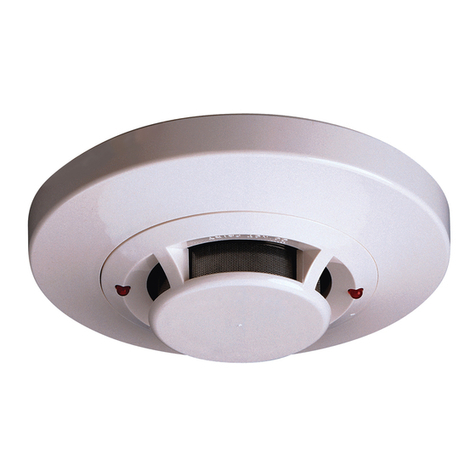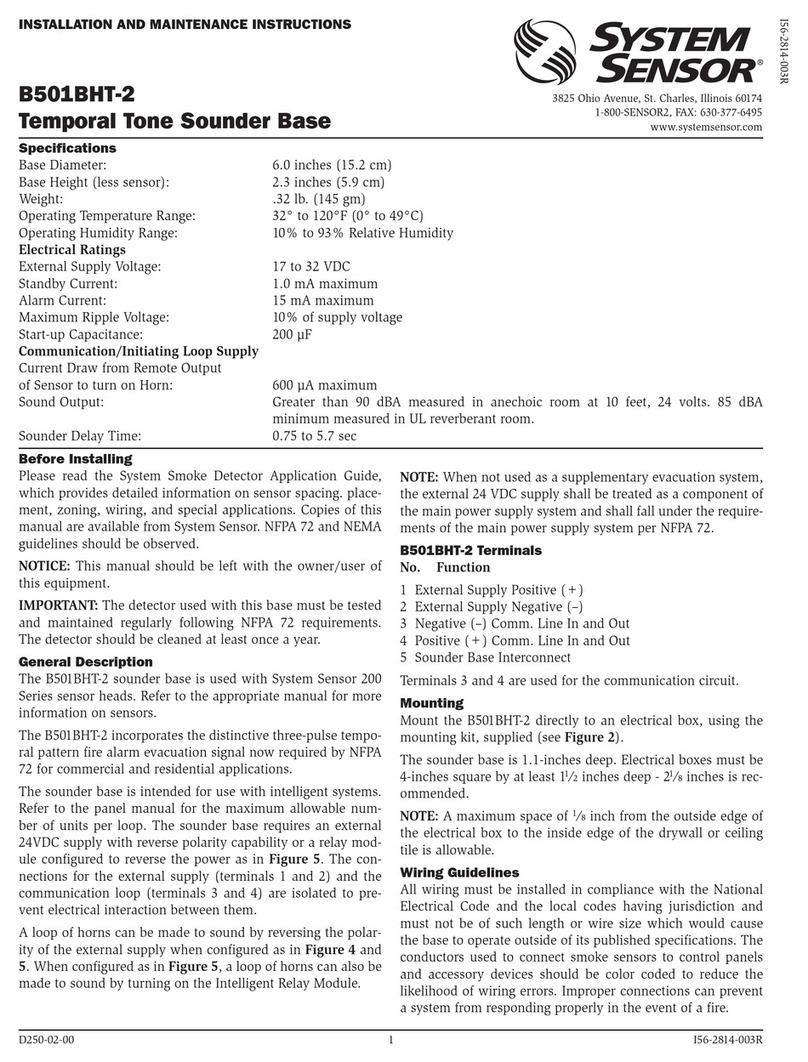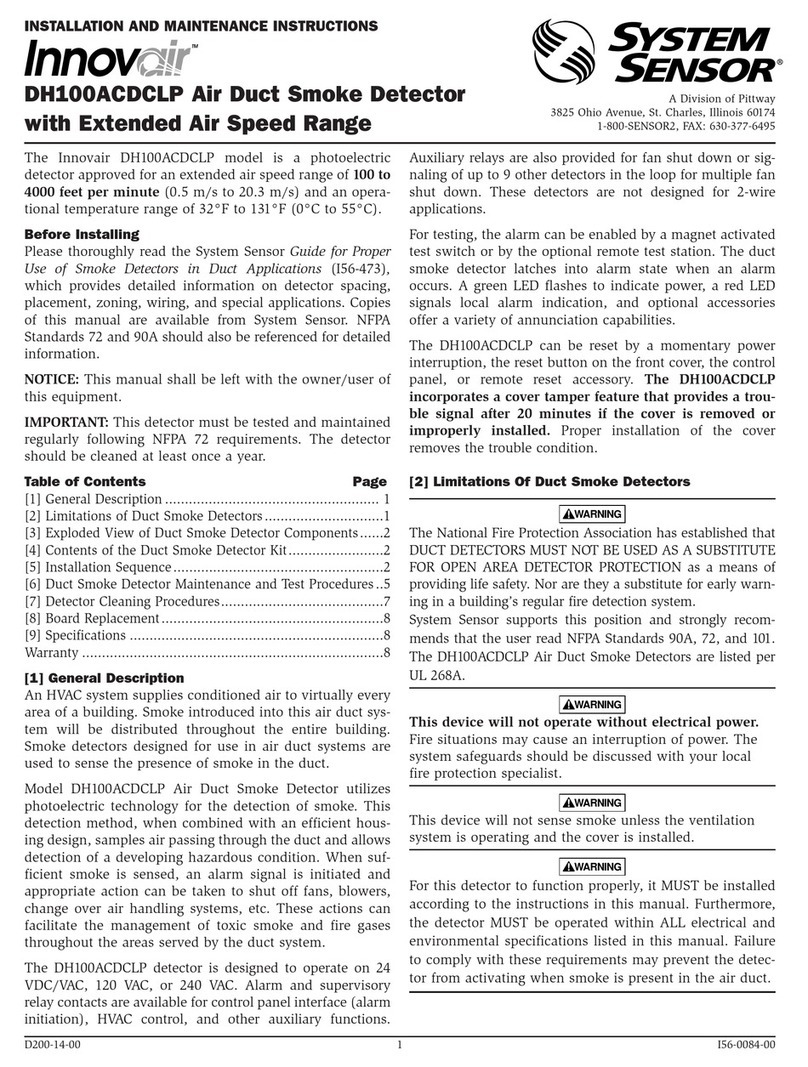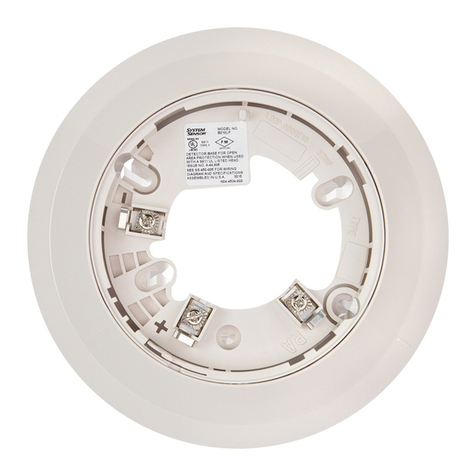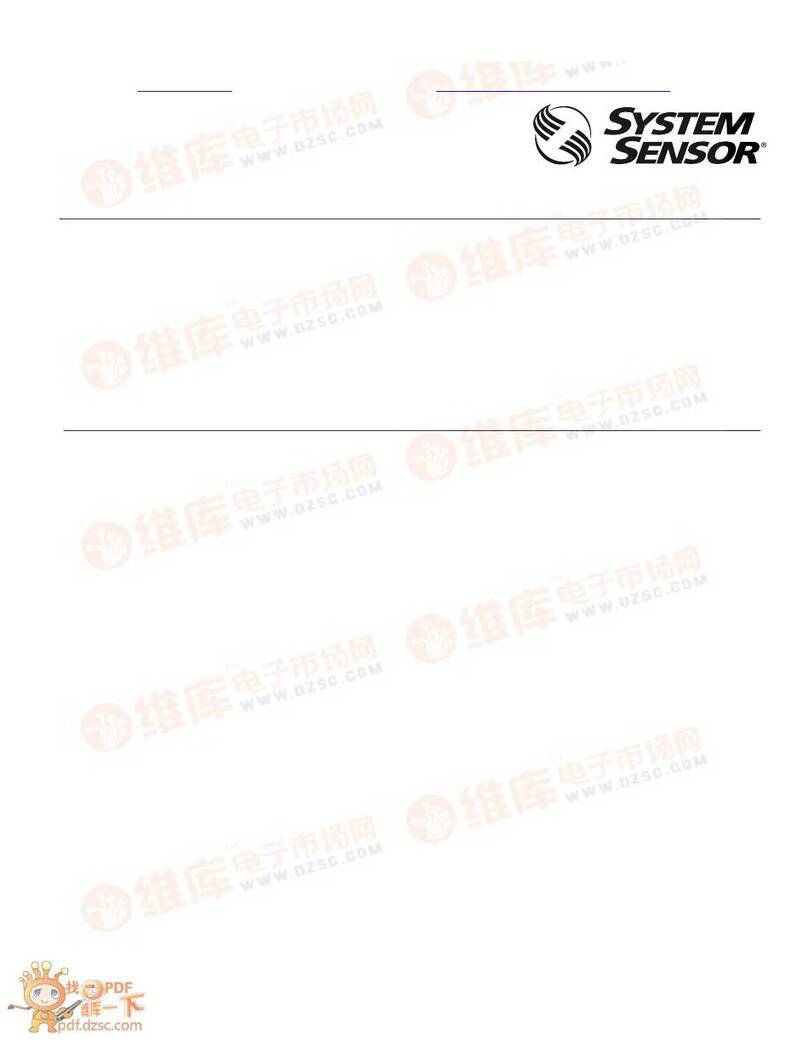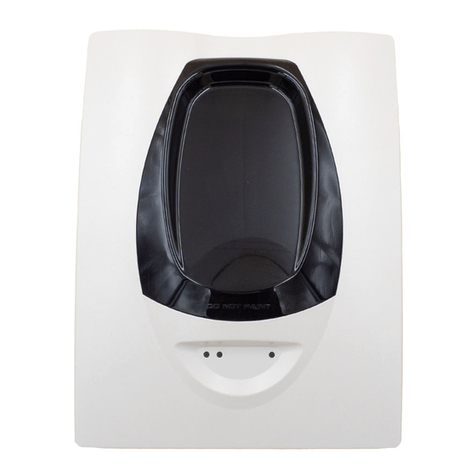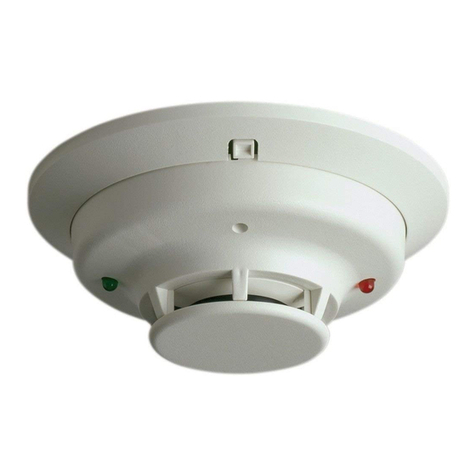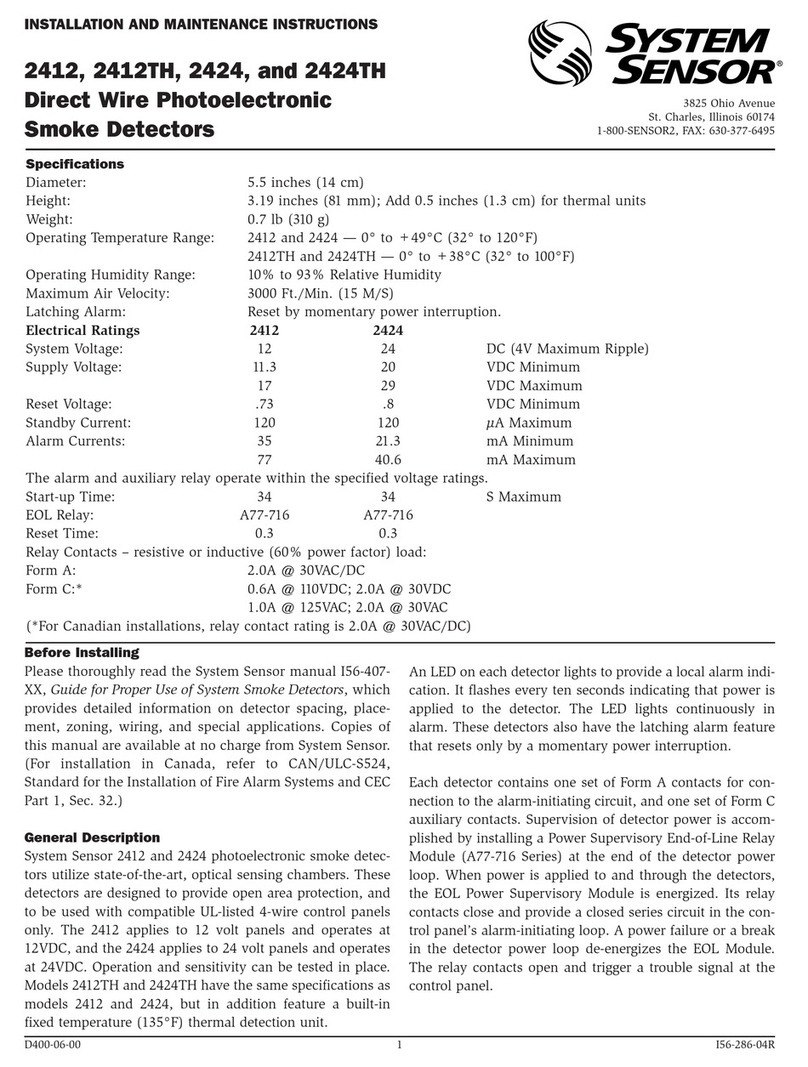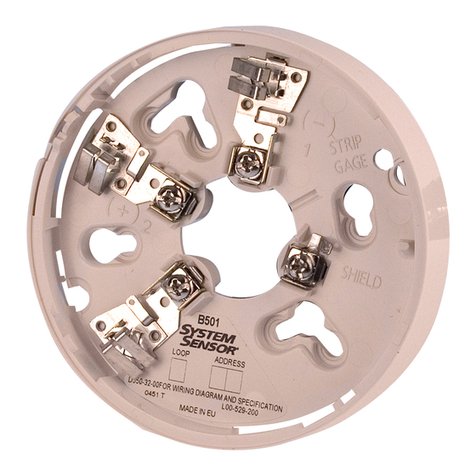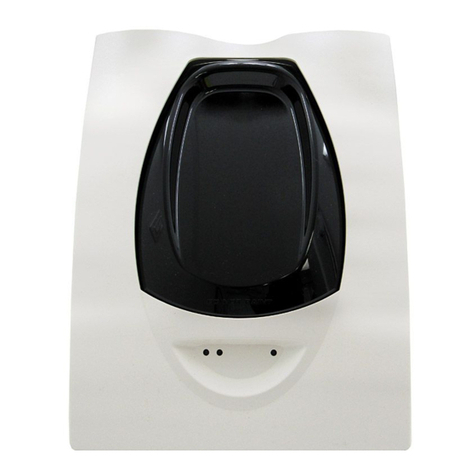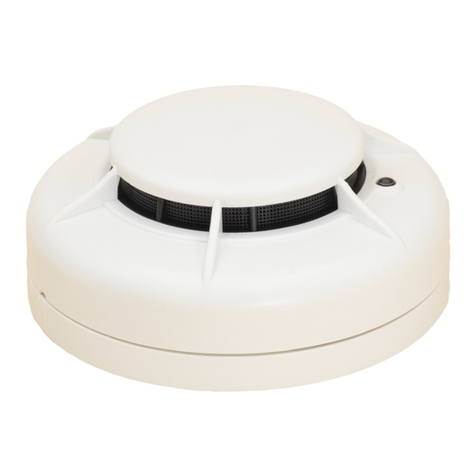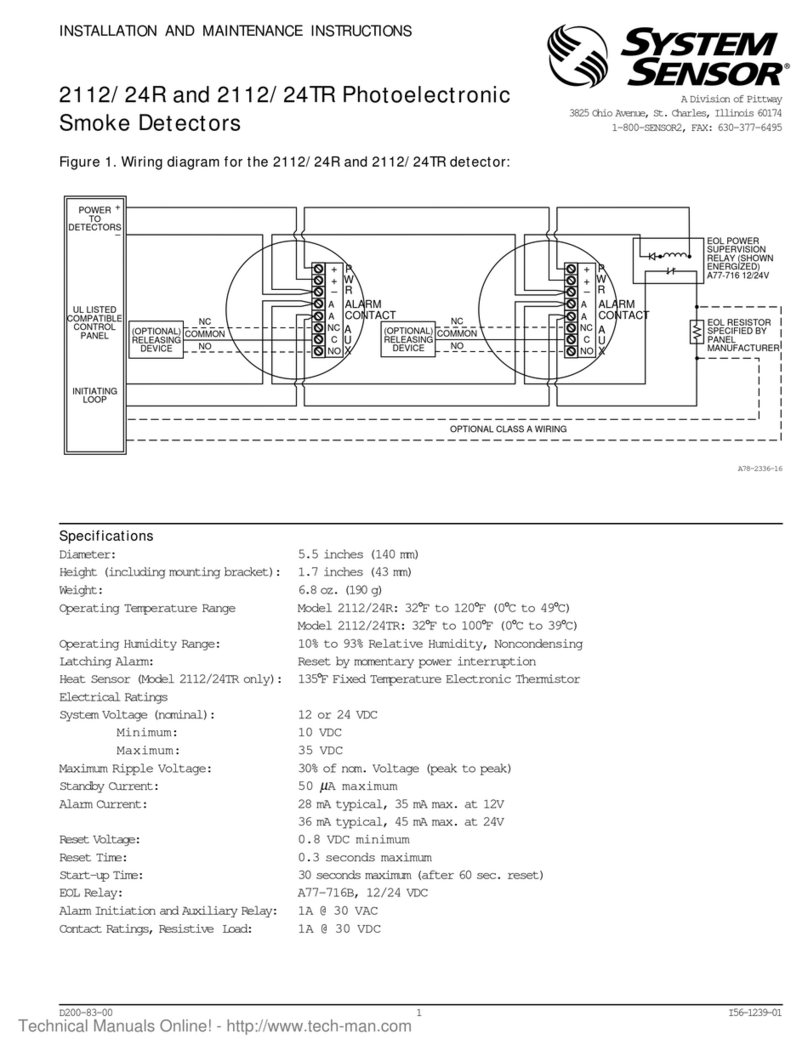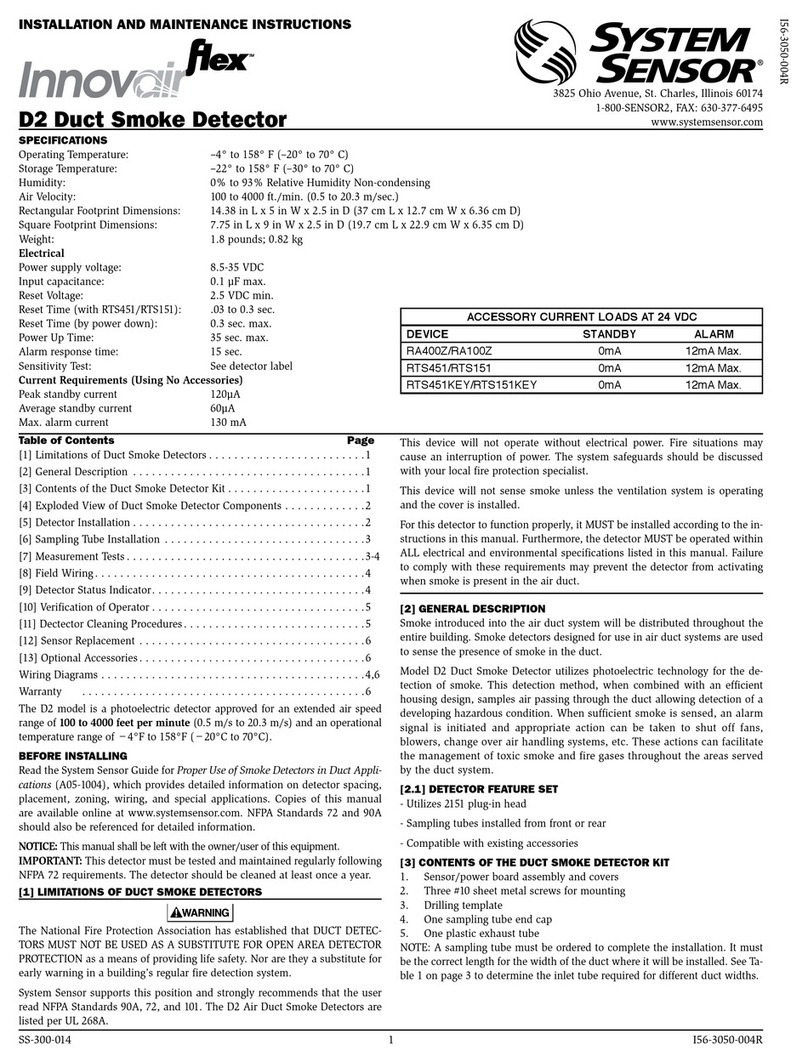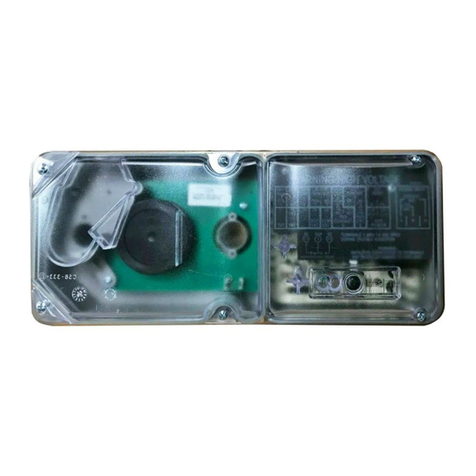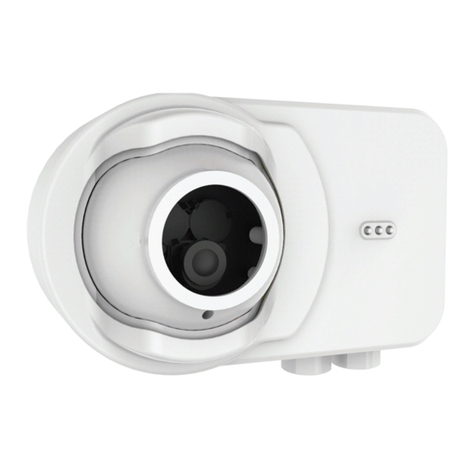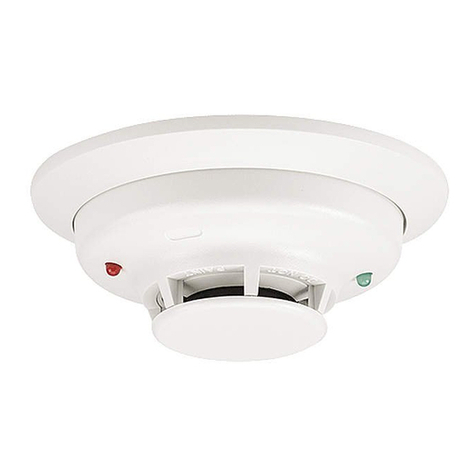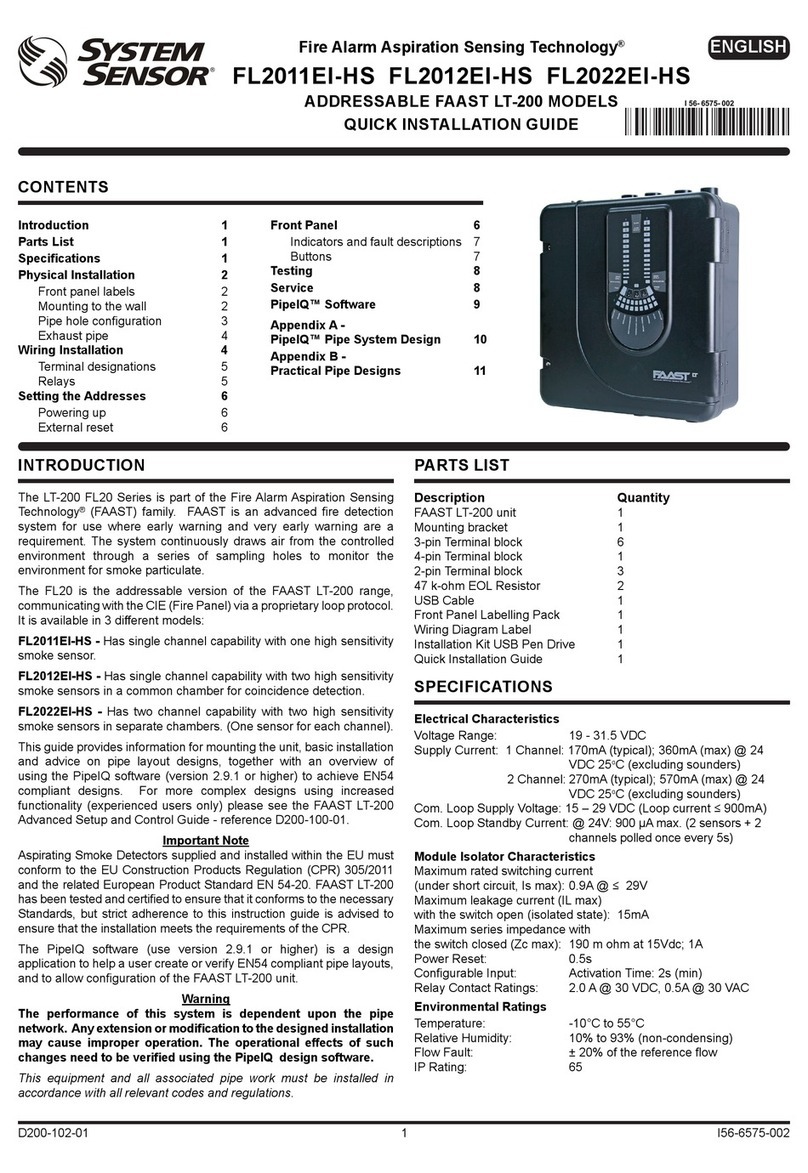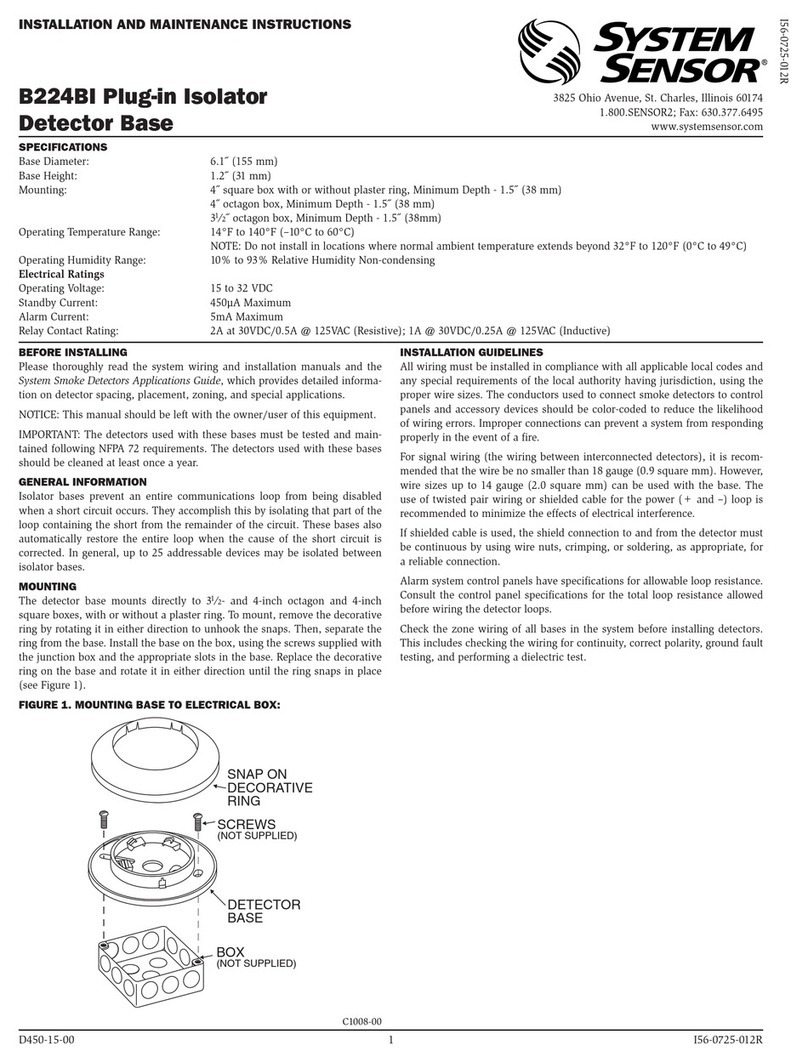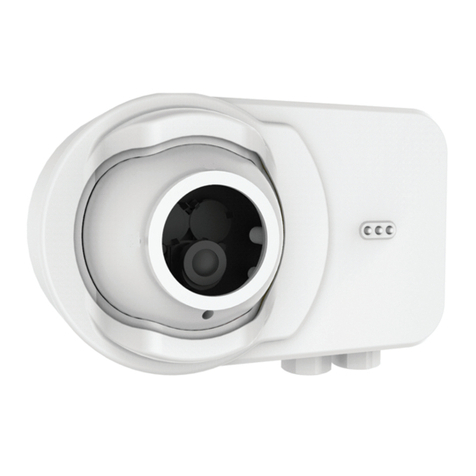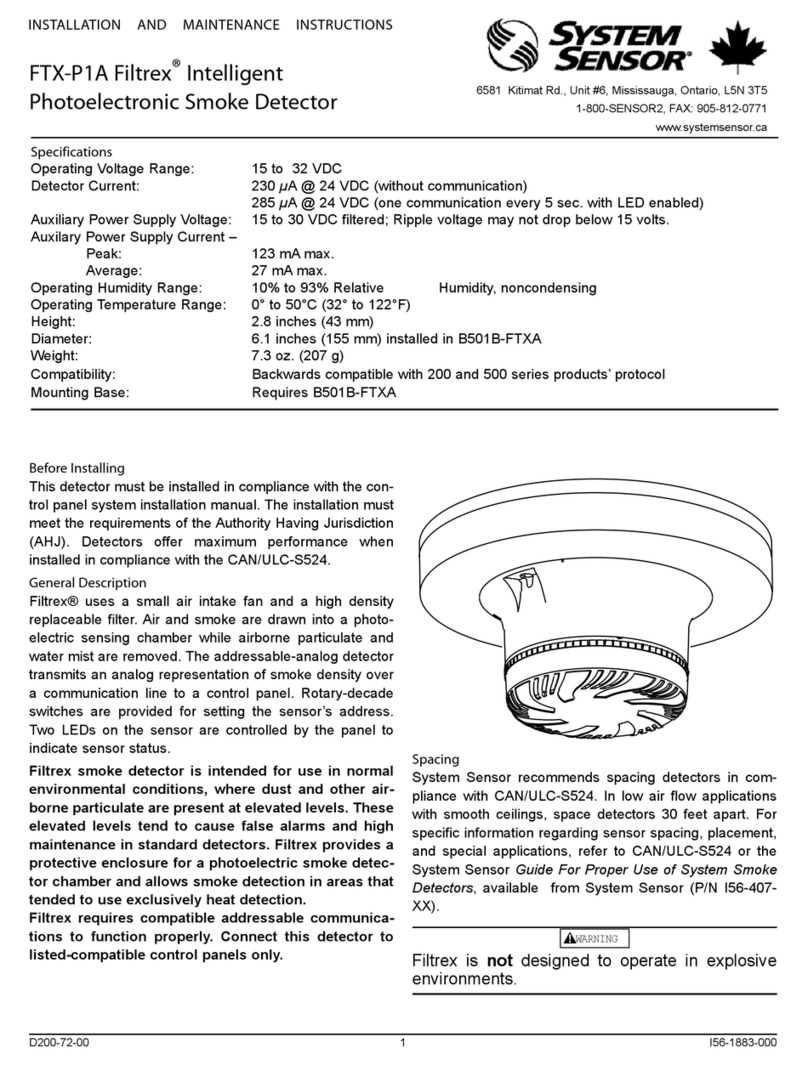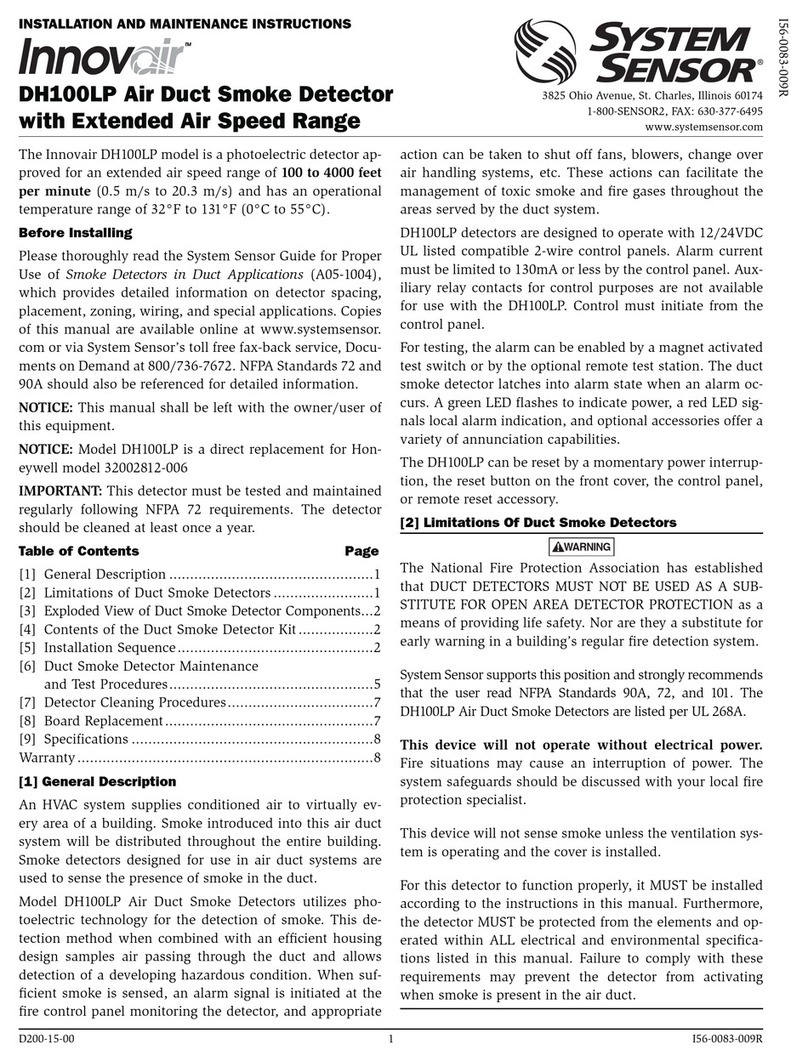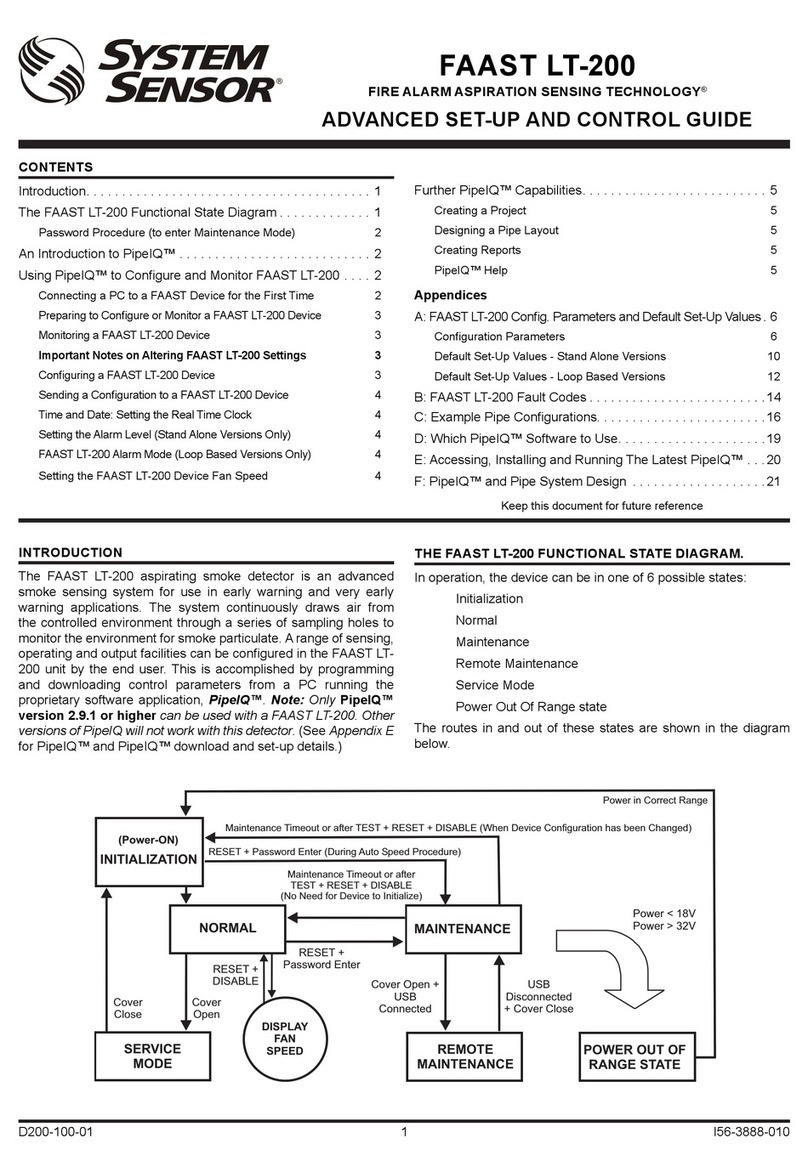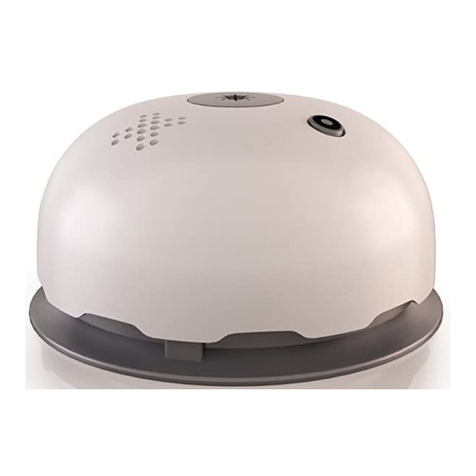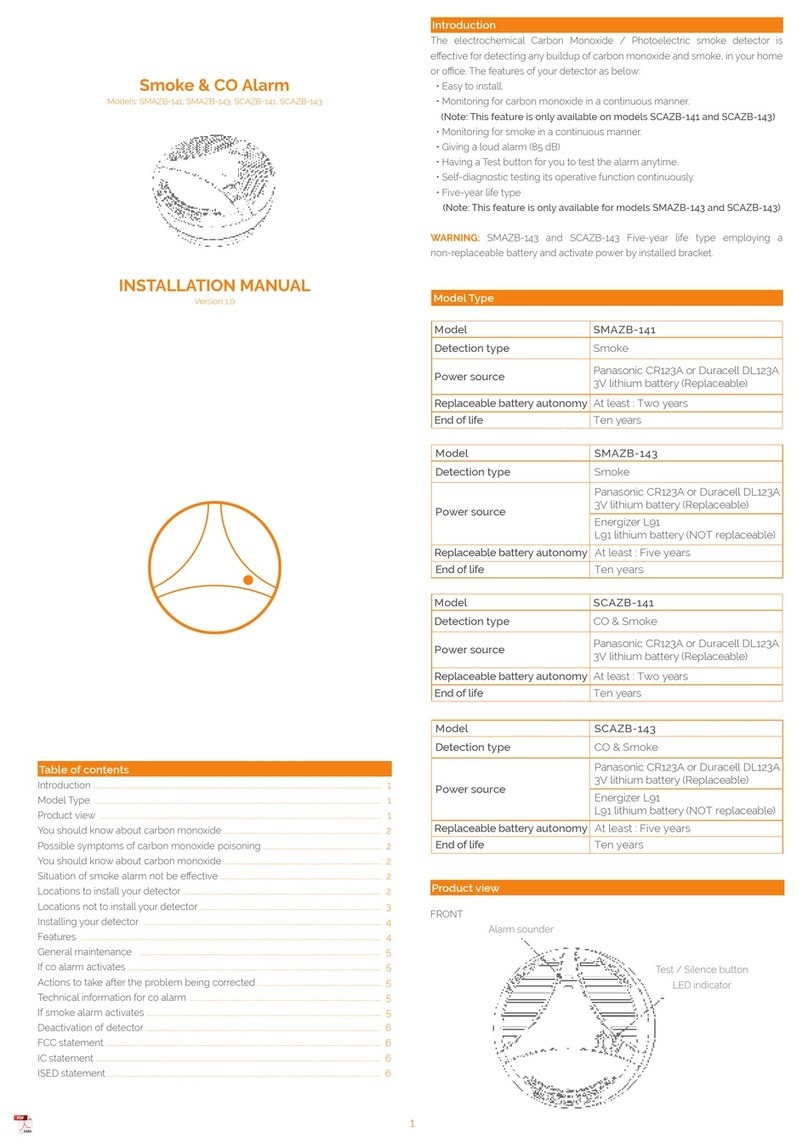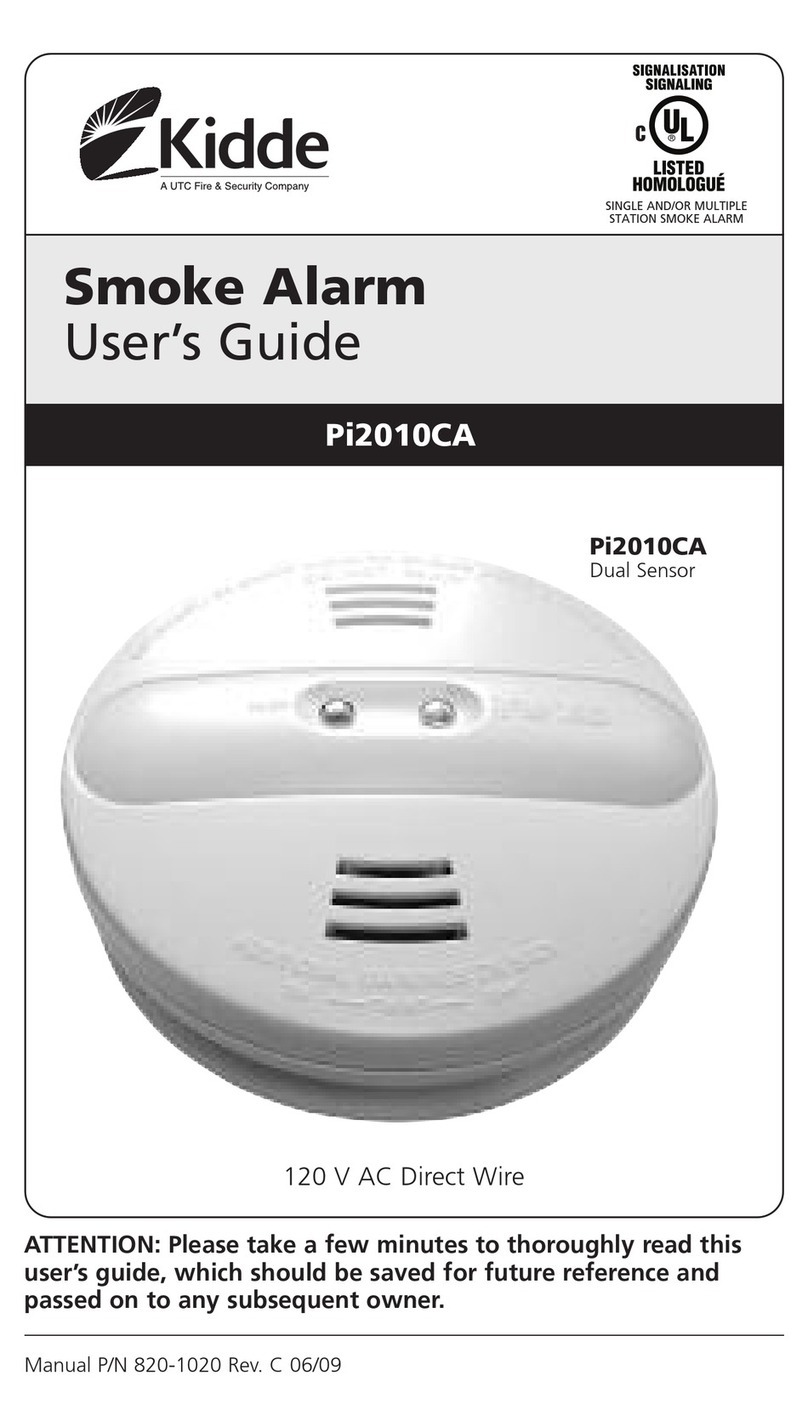
D200-28-00 1 I56-1908-02R
1251B Plug-in Intelligent Ionization
Sensor with Communications
INSTALLATION AND MAINTENANCE INSTRUCTIONS
3825 Ohio Avenue, St. Charles, Illinois 60174
1-800-SENSOR2, FAX: 630-377-6495
www.systemsensor.com
Before Installing
This sensor must be installed in compliance with the con-
trol panel system installation manual. The installation must
meet the requirements of the Authority Having Jurisdiction
(AHJ). Sensors offer maximum performance when installed
in compliance with the National Fire Protection Association
(NFPA); see NFPA 72.
General Description
Model 1251B intelligent ionization sensor uses a state-of-
the-art sensing chamber. These sensors are designed to
provide open area protection and are intended for use with
compatible control panels only.
Two LEDs on each sensor light to provide a local, visible
sensor indication. Remote LED annunciator capability is
also available as an optional accessory (RA400Z).
The 1251B requires compatible addressable communica-
tions to function properly. Connect this sensor to listed-
compatible control panels only.
Spacing
System Sensor recommends spacing sensors in compliance
with NFPA 72. In low air flow applications with smooth
ceilings, space sensors 30 feet apart. For specific infor-
mation regarding sensor spacing, placement, and special
applications, refer to NFPA 72 or the System Smoke Detector
Application Guide, available from System Sensor.
Wiring Guide
All wiring must be installed in compliance with the
National Electrical Code, applicable local codes, and any
special requirements of the Authority Having Jurisdiction.
Specifications
Operating Voltage Range: 15 to 32 VDC
Max. Avg. Standby Current: 300µA @ 24 VDC (one communication every 5 sec. with LED blink enabled)
Max. Alarm Current (LED on): 6.5 mA @ 24 VDC
Operating Humidity Range: 10% to 93% Relative Humidity, non condensing
Operating Temperature Range: 0°C to 49°C (32°F to 120°F)
Height: 2.0 inches (51 mm) installed in B210LP Base
Diameter: 6.1 inches (155 mm) installed in B210LP Base
4.1 inches (104 mm) installed in B501 Base
Weight: 5.4 oz. (153 g)
Proper wire gauges should be used. The installation wires
should be color-coded to limit wiring mistakes and ease
system troubleshooting. Improper connections will prevent
a system from responding properly in the event of a fire.
Remove power from the communication line before
installing sensors.
1. Wire the sensor base (supplied separately) per the wir-
ing diagram, see Figure 1.
2. Set the desired address on the sensor address switches,
see Figure 2.
3. Install the sensor into the sensor base. Push the sensor
into the base while turning it clockwise to secure it in
place.
4. After all sensors have been installed, apply power to the
control unit and activate the communication line.
5. Test the sensor(s) as described in the TESTING section
of this manual.
Dust covers provide limited protection against airborne dust
particles during shipping. Dust covers must be removed
before the sensors can sense smoke. Remove sensors prior
to heavy remodeling or construction.
Tamper-Resistance
Model 1251B includes a tamper-resistant capability that
prevents their removal from the bracket without the use of
a tool. Refer to the base manual for details on making use
of this capability.
